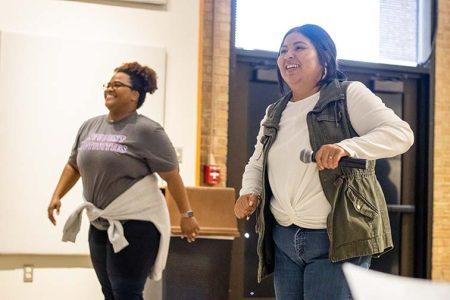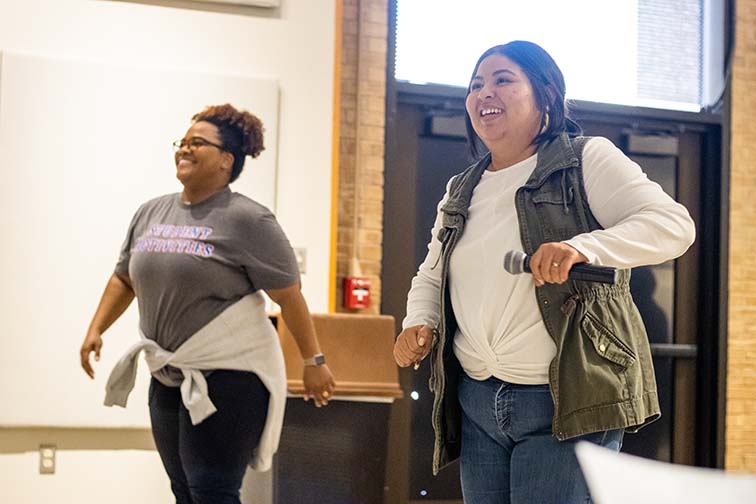
One Time For The Second Line” event. The event was held in NSTU Center Corner.
Ariel Desantiago/The Collegian
XAVIER BOATNER
campus editor
xavier.boatner@my.tccd.edu
NE student activities coordinators talk about the importance of culture at the Second Line Dance event.
On Feb. 15, “Black History Month: One Time for the Second Line” was hosted in the NTSU Center Corner by TCC student activities coordinator Courtney Matthews and SO coordinator Ana Contreras.
The event sought to teach people about New Orleans’ rich musical culture. Provided at the event were a variety of foods like the famous King Cake, a popular type of cake dressed in Mardi Gras-themed icing, available to attendees to eat while they danced along to the music.
“One Time for the Second Line” was created as a way to help attendees learn something new about and potentially act as a stress reliever, said Matthews.
“We created this event as a new way to center the Second Line and New Orleans,” she said. “It’s a great time for students, faculty, and staff to come and just release any stress and any tension and have fun and move the body. It was great to also learn about all those elements like the brass band and Mardi Gras Indians.”
According to New Orleans’s official website, the Second Line is commonly referred to as a “quintessential New Orleans art form.” The dance’s humble beginnings took shape as nothing more than neighborhood tradition in small African American communities.
As time has passed, the dance has been used for multiple purposes. It has been used to help sell various forms of financial and social aid to former slaves and even became commonplace at weddings to symbolize the “beginning of a new life,” according to the website.
Additionally, when the members of a certain African American community pass away, the dance is used in honor of said members and is often prominently featured at New Orleanian funerals. The dance had even been given the name “a jazz funeral without a body” by the community.
The Second Line’s history is extensive and is an iconic element of New Orleans culture. Teaching people that history was important to Contreras, especially during Black History month in particular.
“I really liked the act of learning a new dance style,” she said. “It’s a cultural thing, and I think that’s really important today.”
Matthews said TCC has gone about providing a number of good culturally-themed events and raising awareness about what’s going on in certain communities well.
“I think TCC is putting on a really great variety of different cultural months with the different festivals that they have on campus,” she said. “I think it’s just that we need more opportunities for people to learn about each other’s culture, and learn about what’s going on in our society.”
She said she hoped that attendees would walk away knowing something about the history of the Second Line they didn’t know before.
“I hope they [attendees] learn something new,” Contreras said. “I think that’s what college is all about, learning something new, learning a new culture, and learning where this certain dance comes from.”

